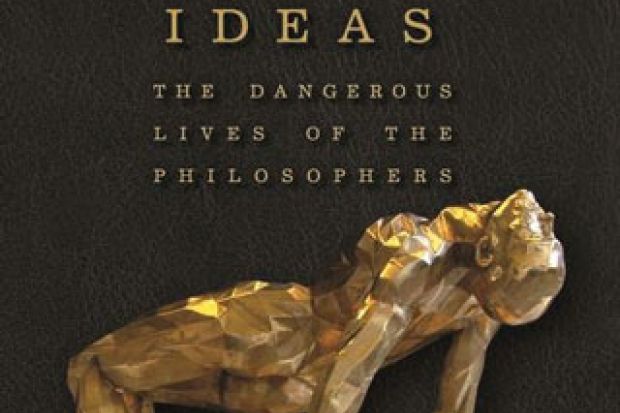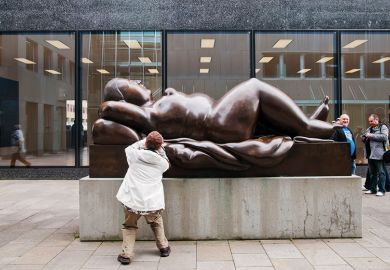In this book, Costica Bradatan offers an intriguing “dramatic narrative” of philosophers’ clash with death. He sees the philosopher’s act of dying for ideas as a hugely important gesture that tricks death by catapulting the philosopher into the immortality of collective memory. It is not what the philosopher says, but what he does, that is so significant.
It is the performance of this act that is the subject of Bradatan’s book. It is structured like the script of a play, with death itself as the main character; intermezzi offer commentary on the story as it unfolds, finally, to the point where the ultimate act of life is performed. But this is not simply a literary technique, for Bradatan’s real project is to make the case that philosophy itself is performance.
If philosophy, as Socrates contended, is about learning how to die well, then the tools that philosophers use – thought, words, writing – are merely part of a rehearsal. Philosophy is found in action and moves beyond the language that builds it, and the philosopher’s body becomes the ultimate testing ground. Bradatan considers how philosophers look at death, how death looks at philosophers, and how the martyr-philosopher is made. Death is not always the “negation of life”; in fact, life needs death. The human condition is uncertainty and impermanence. Against death, philosophy becomes the process of self-realisation. No one escapes death, and Bradatan respects this universality by offering a book that is accessible to all philosophers, academic and non-academic alike. In this intelligent and artful account, he ranges from the ancient world to our own times, drawing on the stories of individual philosophers who defended and died for their beliefs.
Death, he argues, has layers. The first layer is immaterial, abstract or conceptual: in other words, how philosophers have thought of death. Michel de Montaigne sought to domesticate death, to turn our mortality into something that does not take us by surprise. Martin Heidegger privileged anxiety about death as the means by which we can make the most of life.
But death can never remain at a merely conceptual level; inevitably, it must be experienced, and confronting the second layer of death takes us into a discussion of the act of dying, the notion of the dying body, and philosophy in the flesh. Philosophers who die for their ideas must perform the act of dying. Take Hypatia, murdered by a Christian mob in Byzantine-era Alexandria, her body cut into pieces and scattered; Giordano Bruno, burned at the stake in Rome in 1600; Jan Patocka, who died in 1977 after months of brutal police interrogation in communist Czechoslovakia. These deaths are remembered because they happened on a stage. Dying for ideas is a performance that demands an audience.
The book concludes with a postscript on the deconstructive and ironical nature of philosophy. Philosophy originates in the question, and the question unravels and dismantles reality. Rebuilding on such a foundation inevitably reveals the precariousness of the philosopher’s actions. The very performance of dying for ideas is thrown into question: perhaps it is all a farce, and the philosopher’s most important act is not the act of dying but the act of laughing. As Aristotle observed, laughing is a uniquely human activity; laughing as a last act dignifies the human condition. Bradatan’s rich examination of the philosopher’s act of dying for ideas brings into focus the riskiness of living for them as well.
Dying for Ideas: The Dangerous Lives of the Philosophers
By Costica Bradatan
Bloomsbury, 256pp, £19.99
ISBN 9781472525512 and 5826 (e-book)
Published 26 February 2015
Register to continue
Why register?
- Registration is free and only takes a moment
- Once registered, you can read 3 articles a month
- Sign up for our newsletter
Subscribe
Or subscribe for unlimited access to:
- Unlimited access to news, views, insights & reviews
- Digital editions
- Digital access to THE’s university and college rankings analysis
Already registered or a current subscriber? Login





